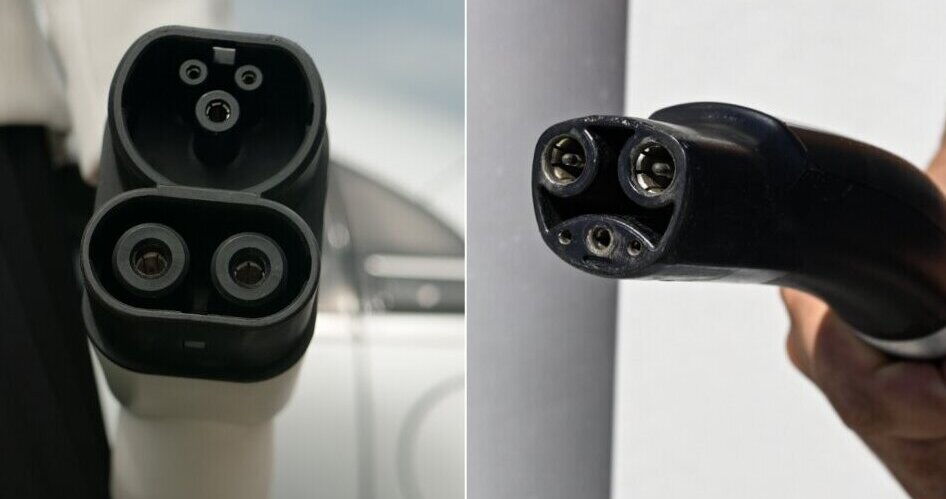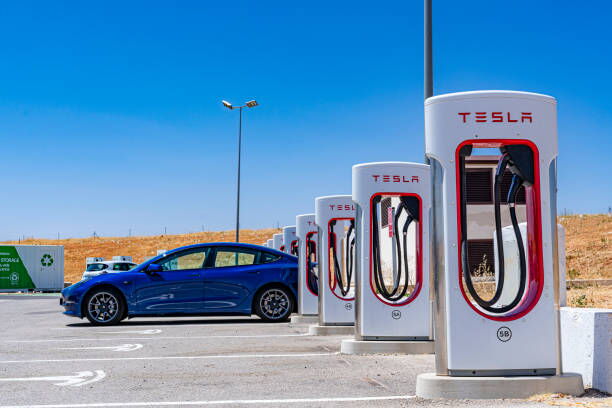The electric vehicle (EV) industry is in a period of rapid growth, driven by advances in battery technology, environmental concerns, and government incentives. At the center of this revolution are EV charging standards, the protocols that define how EVs connect to chargers and refuel their batteries. Two prominent standards dominate the North American market: Tesla's North American Charging Standard (NACS) and the Combined Charging System (CCS). These standards represent different approaches to solving a common challenge, and understanding the differences is essential for consumers and the future of EV infrastructure.

Tesla introduced the North American Charging Standard (NACS) to power its fleet of vehicles efficiently through its expansive Supercharger network. This network is one of the largest in North America and is exclusively available to Tesla vehicles, which include the Model 3, Model Y, Model X, and Model S. Tesla’s proprietary design means that unless a vehicle is configured to use the NACS standard, it cannot access the Superchargers—a factor that has, until recently, limited access for non-Tesla vehicles.
Tesla's Supercharger network spans major highways and urban areas across the United States and Canada, providing Tesla drivers with a seamless charging experience. The NACS is engineered with a sleek, compact design, offering a high-powered, easy-to-use charging solution that incorporates Tesla's commitment to efficient user interfaces and minimalist technology.

The Combined Charging System (CCS) is the dominant standard for virtually every other EV manufacturer. Unlike Tesla's closed network, CCS is used by a broad range of EVs, from affordable models like the Chevrolet Bolt EV to premium brands like Rivian and BMW. CCS chargers are available at non-Tesla charging stations, including networks like EVgo, Electrify America, and ChargePoint. This standard’s open approach means more flexibility for EV owners, allowing them to choose from a variety of charging networks and locations.
While CCS stations may not match Tesla’s Supercharger footprint, their availability is increasing rapidly. In addition, public and private investments in EV infrastructure are fueling the expansion of CCS charging networks, which helps make EVs more accessible to a wider audience.
The two standards differ in design, compatibility, and network reach. NACS is exclusive to Tesla vehicles and is integrated into the Tesla Supercharger network, creating a controlled, high-quality charging experience for Tesla drivers. CCS, on the other hand, was developed as an industry-wide solution compatible with most EVs. Here’s a closer look at some fundamental distinctions:
Tesla’s North American Charging Standard (NACS) has become a benchmark in the electric vehicle (EV) charging industry, offering a range of advantages that set it apart from other charging solutions. Designed with both functionality and user experience in mind, NACS provides EV drivers with a seamless, efficient, and reliable charging experience. Below, we explore the key benefits of Tesla’s NACS in greater detail.
One of the most notable advantages of the NACS charger is its ergonomic design. The NACS plug is compact, lightweight, and easy to handle, making it a favorite among Tesla drivers. Unlike bulkier charging connectors, the NACS plug is designed to be user-friendly, allowing drivers to connect and disconnect their vehicles with minimal effort.
The sleek and modern design of the NACS plug not only enhances its functionality but also complements the aesthetic appeal of Tesla vehicles. This attention to detail reflects Tesla’s commitment to creating a cohesive and enjoyable user experience, from the vehicle itself to the charging process. For drivers who value convenience and ease of use, the ergonomic design of the NACS charger is a significant advantage.
Tesla’s Supercharger network, which utilizes the NACS standard, is renowned for its reliability and consistency. Unlike some third-party charging networks that may suffer from inconsistent performance or frequent outages, Tesla maintains tight control over its Supercharger infrastructure. This includes rigorous maintenance standards, regular updates, and real-time monitoring to ensure that chargers are operational and performing at their best.
For EV drivers, reliability is a critical factor when choosing a charging solution. The ability to depend on Tesla’s Supercharger network for a consistent and hassle-free charging experience provides peace of mind, especially during long trips or in areas where charging options are limited. Tesla’s commitment to reliability has helped establish its Supercharger network as one of the most trusted in the industry.
Another significant advantage of Tesla’s NACS chargers is the availability of multiple charging stalls at Supercharger locations. Tesla strategically designs its charging sites to accommodate a high volume of vehicles, often featuring dozens of charging ports at a single location. This reduces wait times and ensures that drivers can access a charger when they need it, even during peak hours.
The abundance of charging stalls also enhances convenience, as drivers are less likely to encounter crowded or fully occupied charging stations. This is particularly beneficial for long-distance travelers who rely on the Supercharger network to keep their journeys smooth and uninterrupted. By prioritizing accessibility and scalability, Tesla has created a charging infrastructure that meets the growing demands of its expanding customer base.
Tesla’s NACS chargers are designed with simplicity and ease of use in mind. The plug-and-play capability of the Supercharger network allows for automatic authentication and payment, eliminating the need for drivers to fumble with apps, cards, or additional steps to initiate a charging session.
When a Tesla vehicle is connected to a Supercharger, the system automatically recognizes the car and bills the associated Tesla account. This seamless process not only saves time but also enhances the overall user experience, making charging as straightforward as refueling a traditional gasoline vehicle. For drivers who value efficiency and convenience, the plug-and-play functionality of Tesla’s NACS chargers is a major selling point.
The NACS charger is deeply integrated into Tesla’s broader ecosystem, which includes the vehicle’s onboard navigation system, mobile app, and energy management tools. For example, Tesla vehicles can automatically route drivers to the nearest Supercharger station when needed, taking into account factors such as battery level, distance, and charging availability.
Additionally, the Tesla mobile app allows drivers to monitor charging progress, receive notifications, and even pre-condition the battery for optimal charging speeds. This level of integration creates a cohesive and intuitive experience that simplifies the charging process and enhances the overall ownership experience.
As the EV industry continues to evolve, Tesla’s NACS chargers are designed to adapt to future advancements in technology. The compact and versatile design of the NACS plug allows for compatibility with a wide range of vehicles and charging scenarios. Moreover, Tesla’s ongoing investments in its Supercharger network ensure that it remains at the forefront of charging innovation, with features such as faster charging speeds and improved energy efficiency.
By adopting Tesla’s NACS standard, drivers can feel confident that they are investing in a charging solution that is not only reliable and convenient today but also well-positioned to meet the demands of tomorrow’s EV landscape.
While NACS and CCS each offer benefits, the future may see more overlap and collaboration. Some automakers have started experimenting with adapter options to bridge the gap, enabling non-Tesla vehicles to use Superchargers in certain regions. Likewise, Tesla could potentially open its Supercharger network to CCS-compatible vehicles to increase accessibility as the EV market grows.
The success of either standard will largely depend on how charging infrastructure develops in the coming years. Government incentives, industry collaborations, and evolving consumer preferences may push for an interoperable solution where both standards coexist, enabling users to charge their EVs regardless of the network. The potential for government regulations to mandate a single, universal standard could also reshape the landscape, creating even greater accessibility for all EV drivers.
Ultimately, the choice of charging standard may depend on personal preference and brand loyalty. Tesla owners may prefer the convenience and simplicity of NACS, while other EV drivers benefit from the widespread availability of CCS. As the industry moves toward an electric future, ensuring easy and convenient access to charging stations will remain a priority. With continued expansion and potential for cross-network compatibility, the rivalry between NACS and CCS could evolve into a partnership that benefits all EV users.
